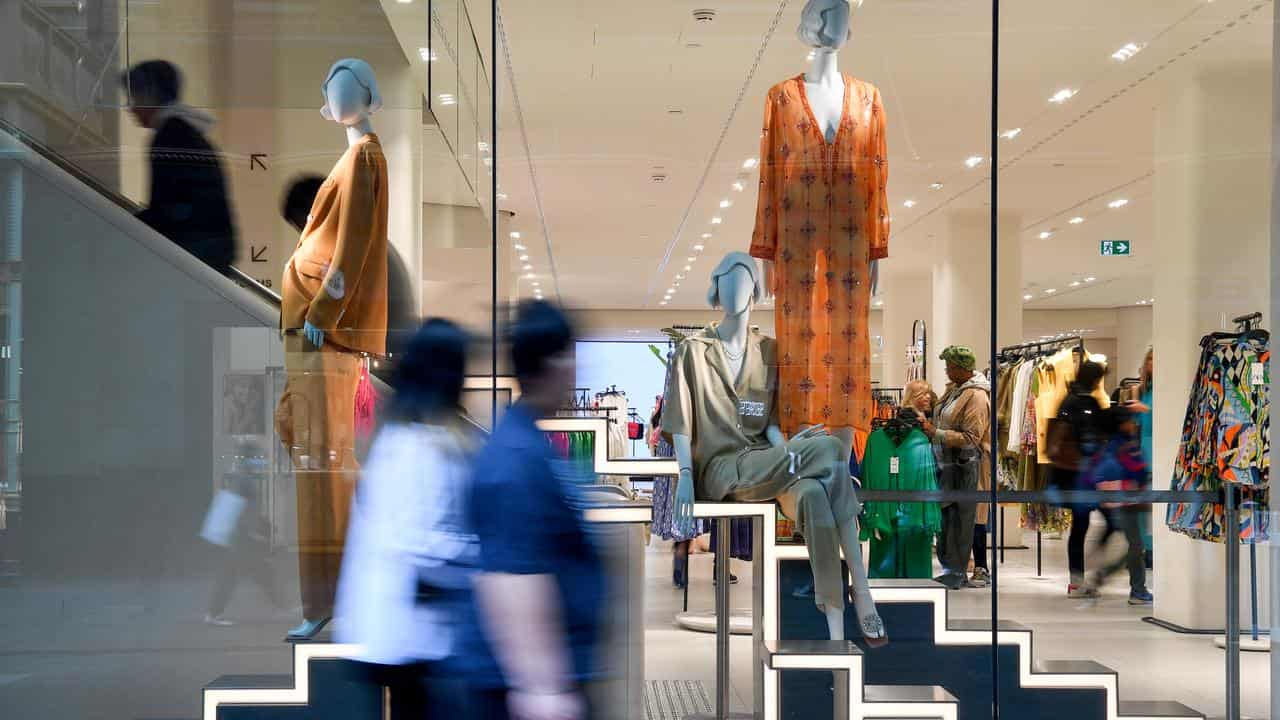
Retail trade data has flatlined as consumers continue to tighten their belts.
Official retail trade turnover as measured by the Australian Bureau of Statistics stayed unchanged for April, coming in slightly weaker than the 0.3 per cent consensus forecast.
The flat figure followed an insipid 0.4 per cent lift in March and a 0.2 per cent increase in February.
Retail spending is still higher than pre-COVID levels but that's partly because prices have ballooned, with the turnover number capturing both volumes and inflationary movements.
ABS head of retail statistics Ben Dorber said retail turnover had plateaued in recent months as consumers responded to acute cost-of-living pressures and rising interest rates.
"Spending was again soft in April but was boosted by increased spending on winter clothing in response to cooler and wetter-than-average weather across the country," he said.
Clothing, footwear and personal accessory sales lifted 1.9 per cent, while department stores improved by 1.5 per cent.
These were the only two categories to rise over the month.
St George senior economist Pat Bustamante said the April dataset confirmed the spending slowdown was ongoing.
When considered on a per person basis, spending had fallen 1.3 per cent over the past six months and was back to about the same level as in the middle of last year.
"Given elevated inflation, this means that individuals are buying a smaller number of items than they did last year," Mr Bustamante explained in a note.
"Even when including the huge surge in migration, total spending has not grown over the past six months - it's back at its October level," he added.
After 13 months of increases, food retailing recorded its first decline, falling 0.1 per cent.
Cafe, restaurant and takeaway sales also sank 0.2 per cent, but Mr Dorber said the category was still at an elevated level, up 13.3 per cent compared to the same time last year.
"Spending has also been boosted by the return of large-scale sporting and cultural events,” he said.
KPMG economist Michael Malakellis said the fall in food-related turnover may be an early sign of sinking food prices.
Dr Malakellis said the surprise interest rate hike in May, after the central bank kept interest rates on hold in April, had likely knocked consumer confidence around.
"This may flow through to lower consumption spending in the coming months," he said.
Dr Malakellis said the clear signs of weakening in household spending alongside a loosening jobs market and deteriorating consumer confidence suggests the Reserve Bank was probably at the end of its interest rate hiking cycle.
After increasing interest rates by 25 basis points in May, the cash rate is now at 3.85 per cent.
In other news, the federal government has announced a couple of key personnel changes.
The Productivity Commission chair, Michael Brennan, has decided not to seek reappointment at the body after five years in the top job.
But the chair of the Board of Taxation, Rosheen Garnon, has been reappointed for another three-year stint.
The board provides the government with advice about tax policy.









